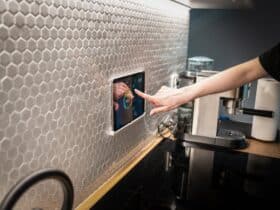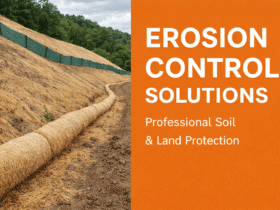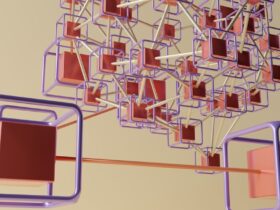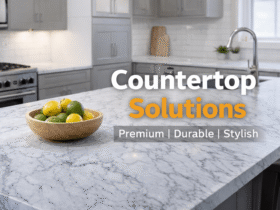Selecting the right furniture and interior designs can greatly enhance a home’s aesthetic appeal. Solid wood, a traditional choice, remains popular due to its durability and timeless appeal. However, its high cost can be prohibitive for many. Consequently, modern furniture makers are innovating, using more affordable materials to bring costs down. Two such alternatives that have emerged are Medium Density Fiberboard (MDF) and particleboard.
These materials, composed of a variety of combined elements, offer viable options for home decor. In the following sections, we’ll delve into the specifics of MDF and particleboard, highlighting their differences and potential applications.
MDF Vs Particle-board: What is the Difference?
| Features | MDF | Particleboard |
|---|---|---|
| Basic Composition | A type of engineered wood made by breaking down hardwood or softwood residuals into wood fibers. | Made from waste wood products formed by applying heat and pressure. |
| Cost | Generally more expensive than particleboard but cheaper than solid wood. | Usually less expensive than MDF and solid wood. |
| Strength | More robust and denser than particleboard. Can handle more weight than particleboard. | Less sturdy compared to MDF. Not ideal for heavy loads. |
| Durability | Resistant to cracking and peeling. Less susceptible to water damage than particleboard. | Less resistant to moisture, tends to swell and disintegrate with prolonged water exposure. |
| Finish Quality | A smooth surface allows for better and more consistent finishes. Ideal for painted finishes. | The rougher surface may not hold finishes as well. Better suited to laminate or veneer finishes. |
| Environmental Impact | MDF uses more wood fibers, leading to more deforestation. However, it can be made from recycled wood. | Particleboard makes use of waste wood, so it’s more environmentally friendly. |
| Usage | Used in higher quality furniture and cabinets due to its strength and finish. | Commonly found in less expensive furniture, laminated countertops, and cabinets. |
It’s important to note that both materials have their strengths and weaknesses. Therefore, the choice between MDF and particleboard will depend on the specific requirements of your project.
What is MDF?
MDF, or Medium Density Fiberboard, is a type of engineered wood product. It’s made by breaking down hardwood or softwood residuals into wood fibers, often in a defibrillator, and then combining it with wax and a resin binder. The process involves applying high temperatures and pressure to form panels.
MDF is denser than plywood and can be used for a variety of applications, including the manufacturing of furniture, cabinetry, and decorative molding. It has a very smooth surface that accepts paint well, making it a great choice for pieces that will be painted.
MDF is generally more durable than particleboard and can handle more weight. However, it is not as strong as solid wood. Its major downside is that it doesn’t handle moisture well; it can swell and warp when exposed to water, so it’s not ideal for use in high-humidity or damp environments without proper sealing.
Advantages of MDF
MDF, or Medium Density Fiberboard, offers a range of advantages, particularly in comparison to other materials like solid wood or particleboard. Here are some key benefits of MDF:
- Smooth Surface: MDF has a very smooth surface that can be easily painted or veneered. It’s an excellent choice for furniture or cabinetry that requires a high-quality finish.
- No Knots or Grains: Unlike solid wood, MDF doesn’t have knots or grains. This makes it more predictable to work with and allows for consistent performance across the entire surface.
- Cost-effective: While MDF is generally more expensive than particleboard, it’s less expensive than high-quality solid wood. This makes it a cost-effective choice for many applications.
- Flexibility: MDF can be easily cut, drilled, and machined without chipping or splintering, allowing for a wide range of design possibilities.
- Uniform Strength and Density: MDF has a consistent structure, with uniform strength and density across the board. This means it doesn’t have a weak direction, in contrast to wood which is weaker along the grain.
- Soundproofing: MDF has good sound-reducing properties, making it a suitable choice for environments where noise reduction is important.
Remember, however, that MDF has certain limitations, including poor resistance to moisture and a weight that’s significantly heavier than solid wood. It’s also not as environmentally friendly as some other materials due to the use of formaldehyde resins in its production.
Disadvantages of MDF
While MDF (Medium Density Fiberboard) offers numerous advantages, it also has several disadvantages to consider:
- Moisture Sensitivity: MDF can be quite vulnerable to water damage. It tends to swell and warp when exposed to moisture, making it a poor choice for areas with high humidity or risk of water exposure, unless it’s properly sealed.
- Heavy Weight: MDF is denser and significantly heavier than solid wood. This can make it more difficult to handle and may not be suitable for certain applications where weight is a consideration.
- Not Suitable for High-Stress Areas: Although MDF is reasonably durable, it’s not as strong as solid wood. It can sag under heavy loads, making it less suitable for applications requiring high structural strength.
- Health Concerns: The resins used in the manufacturing of MDF often contain formaldehyde, a known carcinogen. Dust created when cutting or sanding MDF can be hazardous if inhaled, so it’s important to take precautions.
- Difficulty in Repairs: If MDF gets damaged, it’s more difficult to repair than solid wood. It doesn’t accept wood glue well due to its density, and screws can cause the material to split.
- Environmental Concerns: The production of MDF involves the use of adhesives and resins that can be harmful to the environment. Plus, while it can be made from recycled wood, the process often requires a large amount of energy.
Overall, while MDF can be a cost-effective and versatile choice for many applications, these disadvantages are important to consider in the context of the specific requirements of your project.
What is a Particle board?
Particleboard, also known as chipboard, is another type of engineered wood product. It’s made by combining wood particles, such as wood chips, sawmill shavings, or even sawdust, with a synthetic resin or other suitable binder. This mixture is then pressed and extruded into sheets.
In terms of density, particleboard is typically less dense than MDF. It’s also not as strong or durable, which makes it less suitable for heavy loads or high-stress applications. However, it’s often used in furniture, particularly in areas that aren’t exposed to a lot of wear and tear.
One of the main benefits of particleboard is its cost-effectiveness. It’s generally cheaper than both MDF and solid wood, making it a popular choice for budget-friendly furniture.
Particleboard also has environmental benefits, as it makes use of waste wood products, effectively recycling materials that would otherwise be discarded. However, like MDF, it can also be vulnerable to water damage, and the resins used in its production can contain formaldehyde, which poses potential health risks.
Advantages of Particle-board
Certainly, Particleboard, an engineered wood product, offers several advantages, making it a popular choice for various applications. Here are some of its key benefits:
- Affordable: Compared to other materials like MDF, solid wood, or plywood, particleboard is generally less expensive, making it a cost-effective choice for many projects.
- Lightweight: Particleboard is lighter than many other wood products, making it easy to transport and handle.
- Holds Fasteners Well: Compared to MDF, particleboard tends to hold nails and screws better, enhancing its utility in various constructions.
- Low Maintenance: It’s relatively easy to clean and maintain, which can contribute to the longevity of products made from it.
- Workability: Particleboard can be easily worked with. It can be drilled, cut, milled, painted, and glued with ease.
- Eco-friendly: Since it’s made from waste wood products such as sawdust, wood chips, and shavings, particleboard is a more environmentally friendly option compared to some other materials.
- Consistency: Unlike solid wood, particleboard does not come with natural defects. This makes it a more consistent material to work with.
- Soundproofing Properties: Particleboard is often used in auditoriums, speakers, and theaters due to its sound-damping properties.
-
Smooth Surface: The smooth, flat surface of particleboard makes it easy to adhere to veneer and laminate materials. These thin sheets can be glued onto the surface to enhance its appearance.
Disadvantages of Particle-board
While particleboard offers several advantages, it also has certain disadvantages to keep in mind when considering its use:
- Moisture Sensitivity: Similar to MDF, particleboard is vulnerable to water and moisture. Exposure to dampness can cause it to swell, warp, or even disintegrate over time.
- Lower Strength: Particleboard isn’t as strong or durable as solid wood or MDF. It’s not suited to supporting heavy loads, and it can sag or break under too much weight.
- Limited Screwing and Rescrewing: Although particleboard can hold screws well, it doesn’t handle rescrewing as effectively. If a screw needs to be removed and replaced, the board’s integrity may be compromised.
- Less Attractive Finish: The finish of particleboard isn’t as aesthetically pleasing as natural wood or even MDF. It often needs to be covered with a veneer or laminate to enhance its appearance.
- Formaldehyde Content: Like MDF, particleboard is manufactured using adhesives that can contain formaldehyde, a potential human carcinogen. This makes it important to manage exposure, particularly during cutting or sanding.
- Difficulty in Repairs: Repairing damaged particleboard can be challenging. It doesn’t accept wood glue well due to its composition, and fasteners can cause the material to split.
Keeping these disadvantages in mind is essential when planning to use particleboard for any construction or manufacturing project. It’s crucial to consider the specific requirements of your project to decide if particleboard is the right material for your needs.
Indeed, understanding the properties of MDF and particleboard is vital when considering them for your home décor projects. Ensure to choose high-quality, durable materials that will stand the test of time. This not only enhances the aesthetic appeal of your space but also provides excellent value for your investment. Make an informed decision that best fits your requirements, style, and budget.










